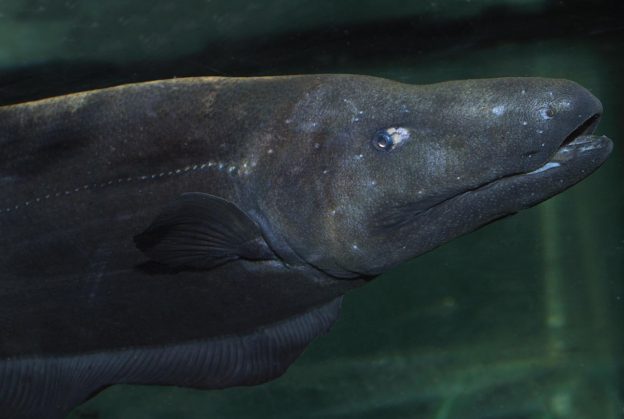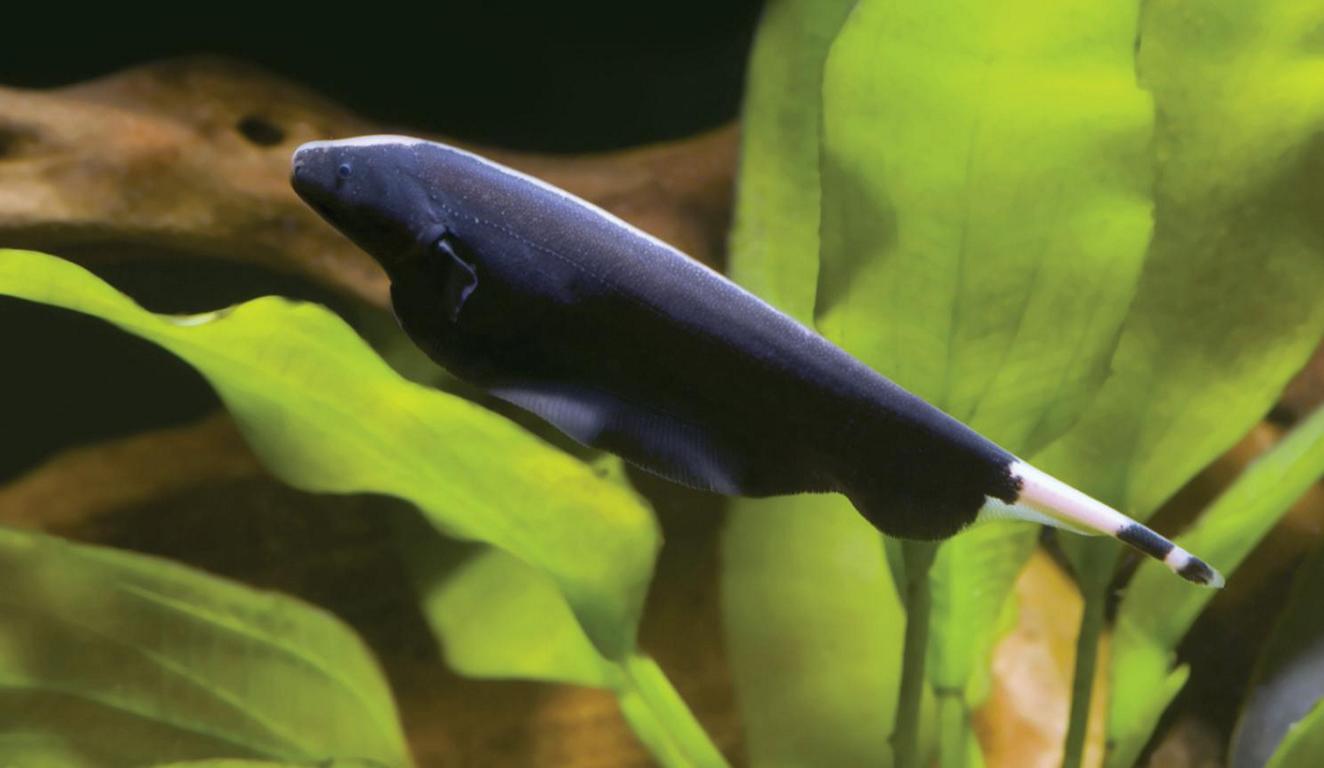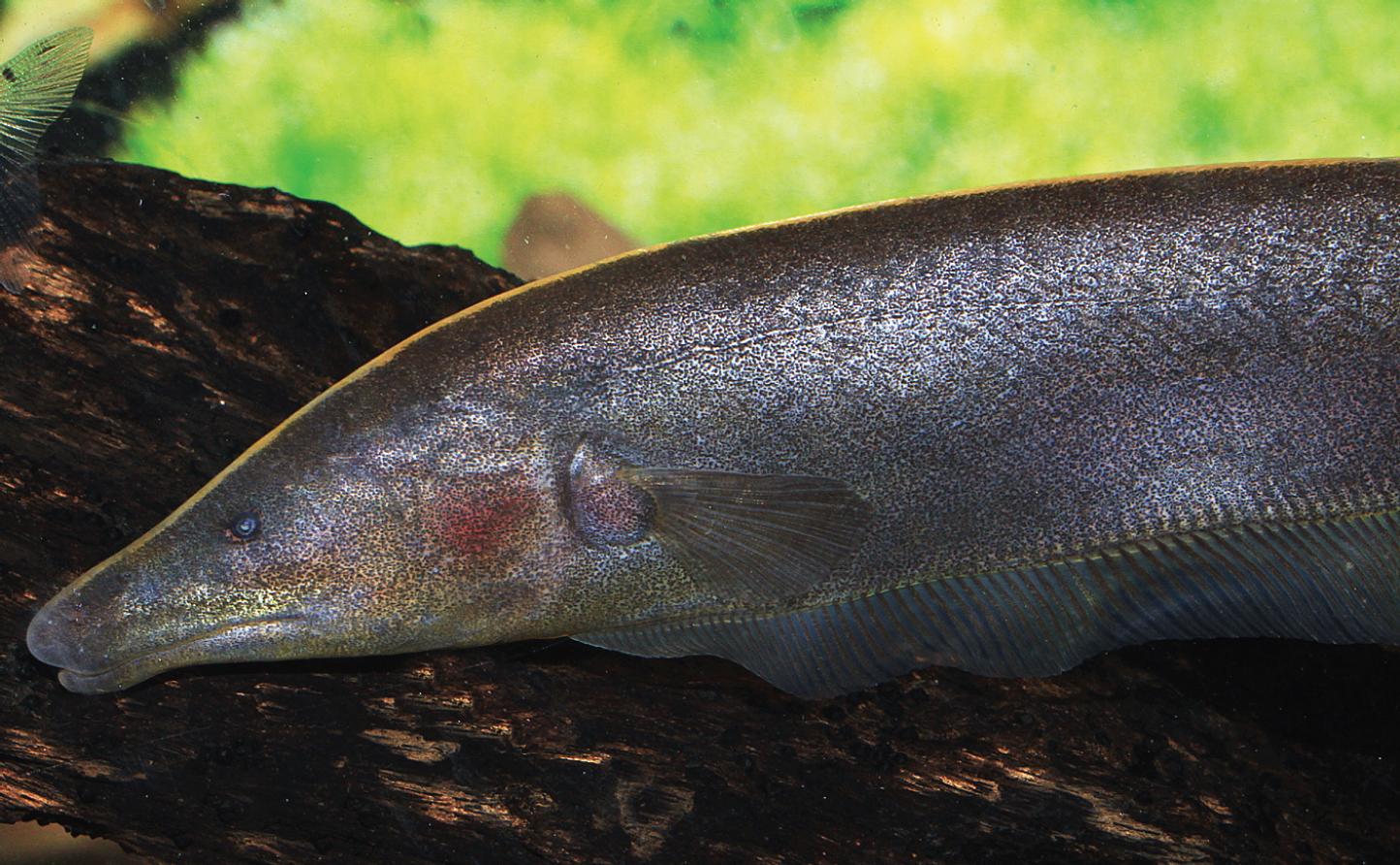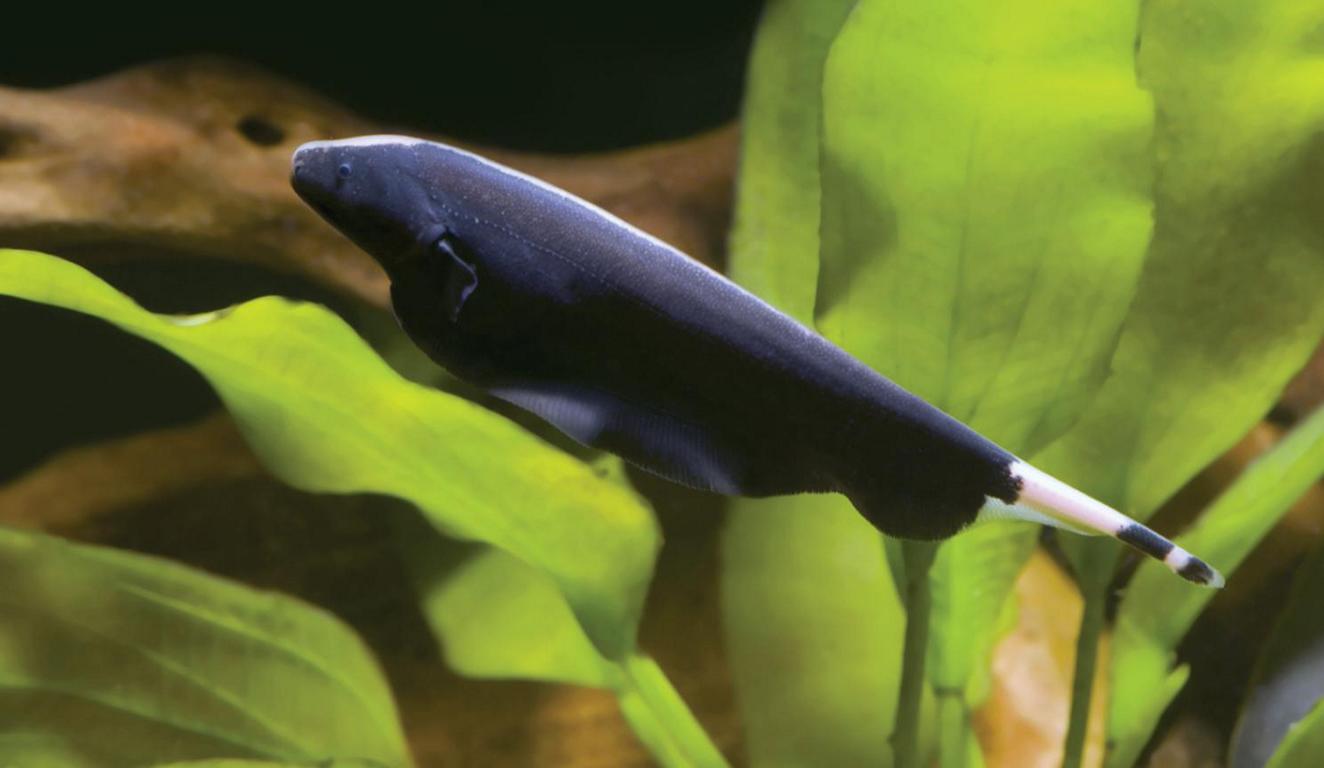
These fishes really do exist! Their full common names are even more bizarre: the Black Ghost Knifefish and the Brown Ghost Knifefish. Yet these English names seem singularly appropriate for these uniquely elegant creatures, which glide through the water with incomparable grace, as if they had invented swimming.
The South American knifefishes, with well over 100 species, are found all
over the South American continent and some of them have made it to Central America as well. All species possess an electrical organ that is used for orientation and communication. Yes, you read that correctly: these fishes communicate with one another by means of electrical impulses! The use of the electrical organ for orientation can be seen as analogous to the
radar or sonar that we humans utilize for a similar purpose. But only one species of South American fish,namely the Electric EelElectrophorus electricus, has an electrical organ that can also be used as a weapon.
This up to 2 meters long fish can deliver an electric shock of 500 volts at 1 ampere. That is enough to kill any human stupid enough to provoke this animal! But don’t worry, the electrical organ of our ghost fish can’t even
produce 1 volt and cannot be detected, even when handling adult specimens.
Systematics
After the above introduction, a few words on the position of the ghost knifefishes in the zoological system. They belong to the group Ostariophysii and have a Weberian apparatus, a complicated structure composed of tiny bones and connected to the gas-filled swimbladder of the fish. Because the swimbladder is an extremely sensitive organ that reacts even to minimalchanges in water pressure, and also acts as a resonating body for sounds, the Weberian apparatus can transmit a very large number of environmental stimuli to the fish. This complex arrangement has undoubtedly been “invented” only once in the course of evolution and hence can be invoked as evidence of phylogenetic relationships. On this basis the South American knifefishes form part of an evolutionary series with thecyprinids, characins, and catfishes. The South American knifefishes are grouped together in the order Gymnotiformes. Our ghostfishes in turn belong to the family Apteronotidae, which contains 60-70 species in more than a dozen genera.
Unfortunately there is no point in going into further details, as at present new species are constantly being discovered and the generic concept is under review.
The Black Ghost
The ghostfish species most commonly seen in the pet trade is Apteronotus albifrons. It is nominally very widely distributed in South America (Argentina, Brazil, Ecuador, French Guiana, Guyana, Colombia, Paraguay, Peru, Surinam, and Venezuela), but it seems more likely that there are in fact several species, very similar in appearance and not yet recognized as distinct. Wild fishes are imported from Colombia, but the species is also bred commercially for the aquariumfish trade in Indonesia as well as in central Europe. Maximum length is around 50 cm, but this applies only to the very largest
males. Usually these fishes attain a length of 20-30 cm. For comparison: the largest known human was around 270 cm tall, but that doesn’t alter the fact that in central Europe people are usually somewhere between 160 and 180 cm in height.

The Brown Ghost
This species, whose scientific name is Apteronotus leptorhynchus, is the second commonest in the trade. It too is imported from Colombia, and it too is very widely distributed: Brazil, French Guiana, Guyana, Colombia, Peru, Surinam, and Venezuela. This species remains smaller, with maximum length given as less than 30 cm and sexual maturity being attained at
around 12 cm.

Why “ghost”?
It is said that there are tribes in South America who believe that the souls of their dead enter into these fishes,and hence they call them ghostfishes. I don’t know whether the story is true or just a nice anecdote. But the explanation given in the introduction to this article may also apply, as virtually no other fish species can swim so adroitly as the knifefishes, or in every direction in three-dimensional space. In addition they can swim head-up, head-down, on their backs, and even in a normal swimming position, both forwards and backwards! Nobody with the least trace of interest in Nature can resist this enchanting performance.
Maintenance and breeding
Fundamentally, these fishes should be kept in groups (5-8 individuals) in the aquarium. The sexes cannot be determined in the juveniles usually seen in the trade, but at a length of 10-12 cm (A. leptorhynchus) or 15-20 cm (A. albifrons) the males can be identified by their larger size and by having a prolonged snout. These fishes should be provided with a 300-400-liter aquarium with lots of hiding-places, including PVC tubes. The latter are very important as the fishes can use them to escape the “electrosmog” when required, if their conspecifics have just been indulging in a friendly chat and the previous night has been a hard time for some individuals. It is better not to try and keep them with other species of
fishes. Ghosts have little defense against “robust”species but on the other hand they have the unpleasant habit of sometimes biting out the eyes of harmless shoaling fishes. If they are nevertheless to be kept with other fishes, the most suitable tankmates are various catfish species.
Ghosts can be given bloodworms and glassworms (live and frozen) as a staple food, but almost all the usual types of food are accepted as long as they will fit into the fish’s mouth. However, flake food isn’t really
suitable at all. Anyone who wants to breed these fishes needs to be aware that they are seasonal spawners whose sex organs shrink so much outside the breeding season that they cease to be functional. In order to induce the sex organs to “ripen”it is necessary to simulate the rainy season, which can be achieved by continually lowering the conductivity of the water over a period of several weeks (to around 200-250 ?S/cm), and simultaneously allowing the water level in the aquarium to fluctuate by around 10-20 cm; the sound of rain falling may be an additional important trigger. Ghosts spawn in cracks in rocks or wood and do not practice any brood care. The young will take Artemia nauplii right from the start and rearing has proved to present few problems. Anyone who wishes to know more about breeding these fishes should please refer to KIRSCHBAUM (1995).

Anzeige






